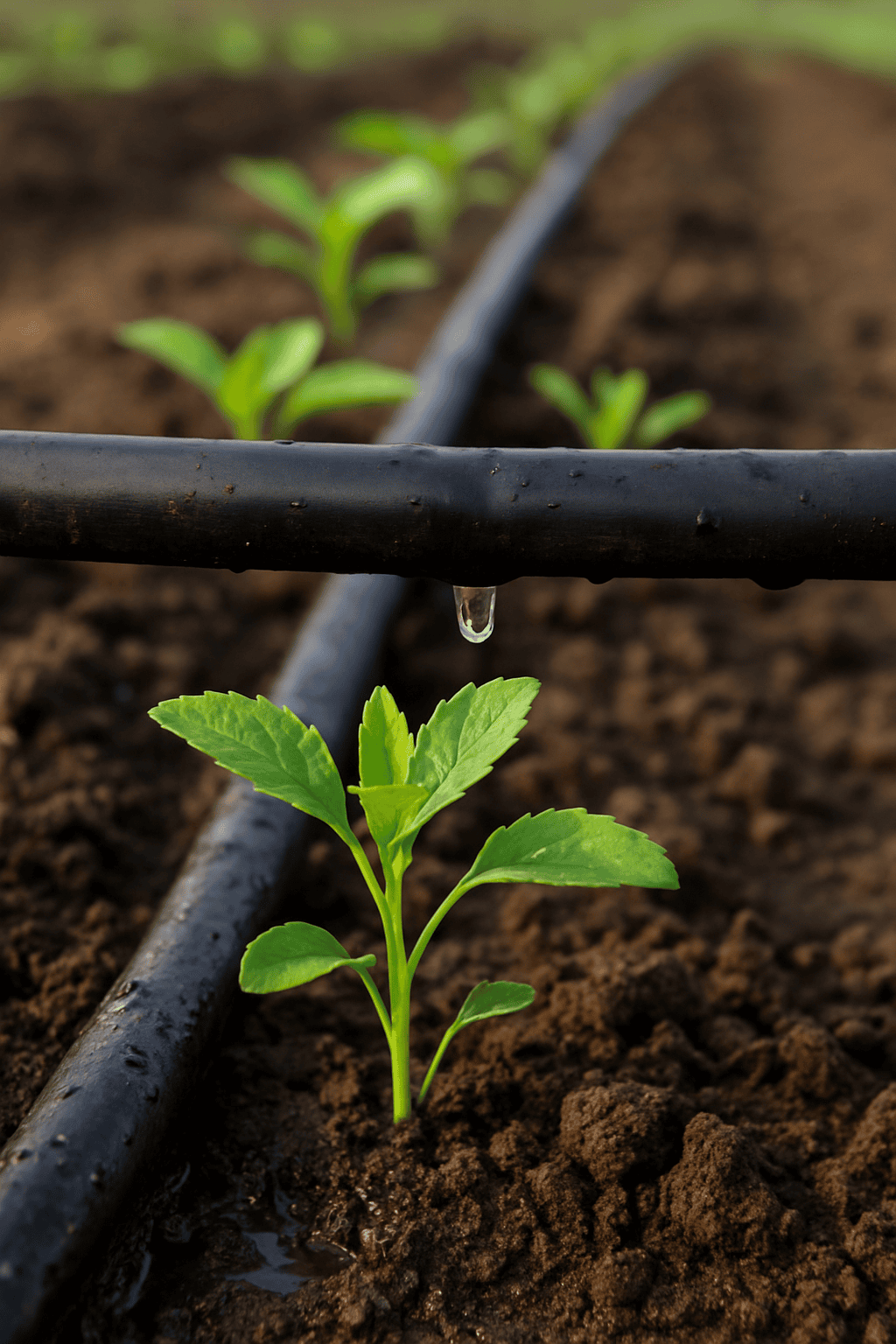Drip irrigation is an efficient water delivery system that applies water directly to the roots of plants through a network of tubes, emitters, and valves. It is widely used to conserve water, improve crop yields, and prevent soil degradation.
Statement 1 is correct: Drip irrigation delivers water precisely at the plant's root zone, reducing the moisture available on the soil surface. Since weeds typically thrive in moist topsoil, limiting water exposure to non-target areas helps suppress their growth. This makes weed control easier compared to traditional irrigation methods like flooding or sprinklers, which wet the entire field.
Statement 2 is incorrect: Soil salinity refers to the accumulation of salts in the soil, which can hinder plant growth. While drip irrigation helps manage water efficiently, it does not directly reduce salinity. However, it can be combined with strategic flushing techniques (applying extra water at intervals) to push salts below the root zone, preventing salt buildup in the upper soil layers.
Statement 3 is correct: Drip irrigation releases water slowly and in a controlled manner, reducing surface runoff that can lead to soil erosion. Unlike traditional flood irrigation, which can wash away the topsoil, drip irrigation preserves soil structure and fertility, making it a sustainable choice for agriculture.
Hence, the correct answer is option C.


